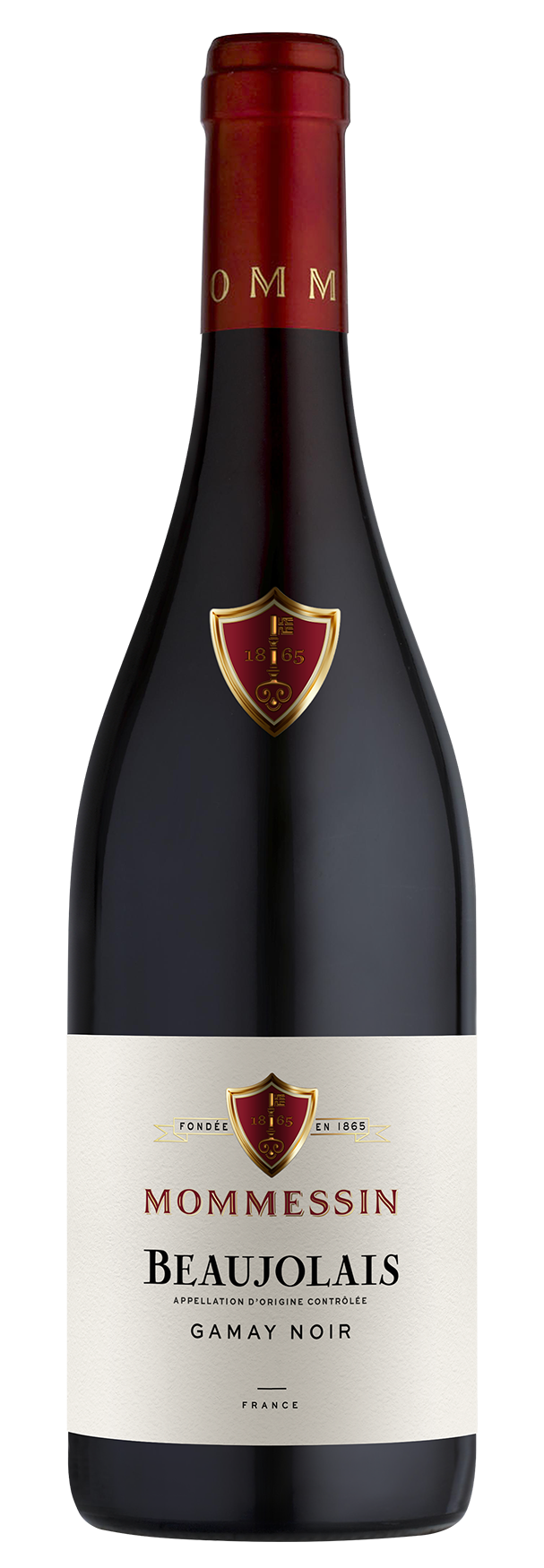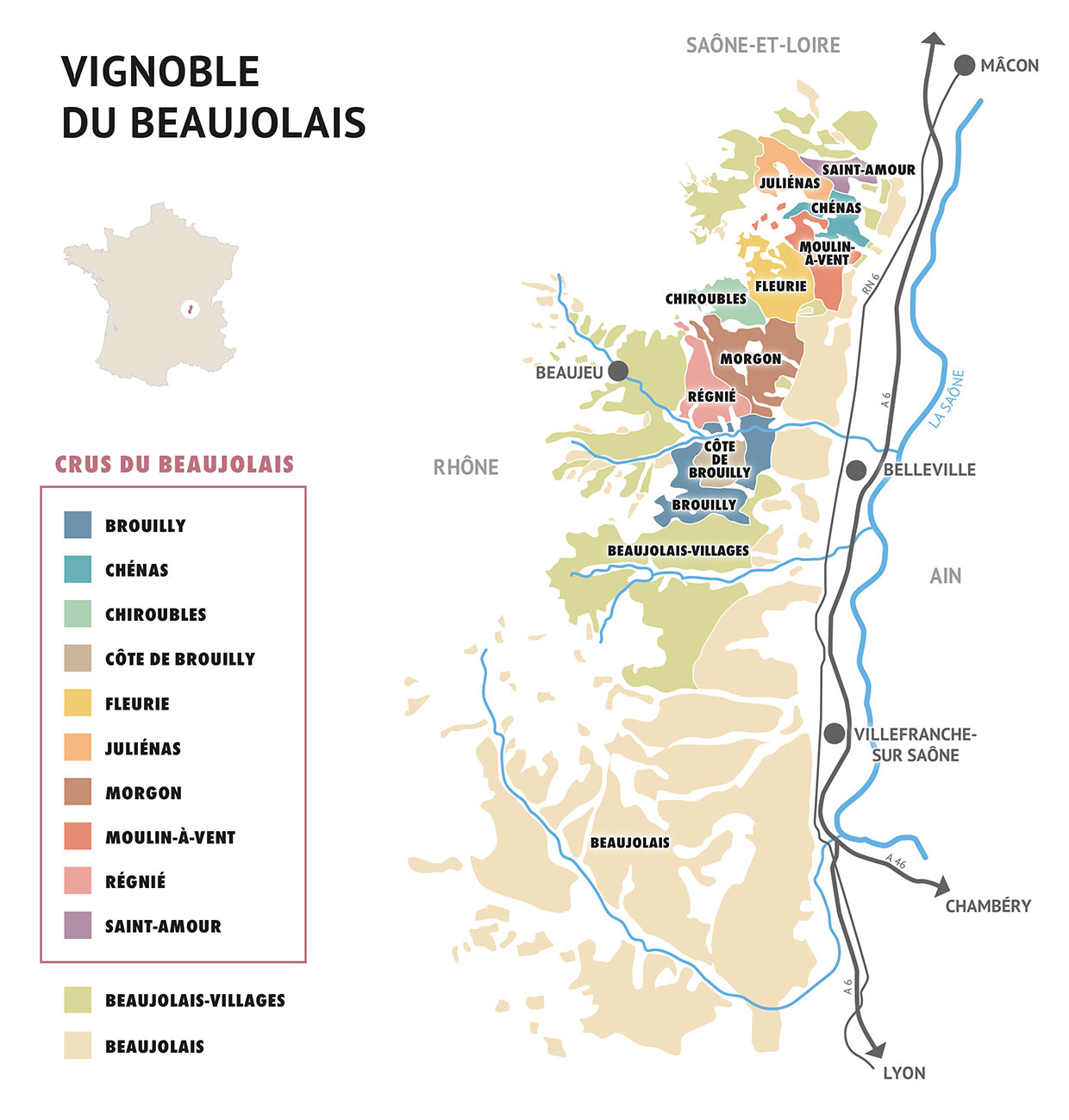Grape varietal
Black Gamay (Gamay Noir) with white juice.
Tasting notes
Colour: Elegant ruby red with purple reflections.
Nose: A fresh and fruity bouquet wine with aromas of small red fruits (strawberry).
Palate: A fruity and lively taste, round and supple in the mouth, with good balance and smoothness.
Serving suggestions
It should be served between 11 and 13°C. (52-55°F.)
Food and wine pairing
A pleasant, friendly wine, to be appreciated at any time of the day, with picnics, before meals, or with cold meats and starters.
Ageing potential
Beaujolais is a highly aromatic wine that could be drunk to enjoy its fruity bouquet. Best between one to 3 years.
Terroir
Beaujolais A.O.C wines are mainly produced in the south of Villefranche-sur-Saône. The vineyard spreads over 9 700 hectares. It is the most important production area representing 50% of the total production. Only one variety of vine is used in the Beaujolais vineyard : black gamay with white juice which produces red wine. The region also has the highest density of plantations (between 9 000 and 13 000 vines per hectare) which, together with a strict trimming of the vines (12 buds max.), limits the yield. The Beaujolais wine making method is unique and combines ancestral method with modern technique.
Soils made of chalky clay and granite. Average age of vines : 40 years.
Vinification and maturing
Manual harvests. Traditional semi-carbonic Beaujolais vinification during 12 to 15 days to ensure good extraction, with temperatures held at 22-25°C (71-77°F) to protect the fruit of the Gamay grape. Ageing in vats.
Vintage : 2022
Rainfall in June was highly variable from one area to another. In the south of Beaujolais, where most of the Chardonnays are concentrated, there was little rain, unlike the north, where the crus are located. The intense heat of July and August accelerated the ripening process for the Gamay grapes. The harvest was characterised by great disparity between the plots. Some grapes did not withstand these extreme conditions and lost a lot of juice, while others resisted them exceptionally well. Several factors explain these divisions such as the heavily drained soil, the exposure, and the age and yield on the vine. There was little difference between the early and late sectors.
The harvest took place from 23 August to 10 September in the Beaujolais vineyards. Volumes were lower throughout the appellation, but the quality was good. This year we have focused on de-stemming with long macerations to enhance the wine's elegance. Naturally, our traditional semi-carbonated vinification with whole grapes is still used to extract the aromatic finesse of the Gamay grapes, as well as some hot pre-fermentative maceration to extract as much colour as possible from the grapes that suffered the most from the drought.
The wines are beautifully concentrated with a lovely volume in the mouth. Tannins are prominent. Tasting is a real pleasure. The nose and palate reveal raspberry and cherry liqueur aromas, smooth blueberry cream accompanied by violets, dark chocolate and pear.




